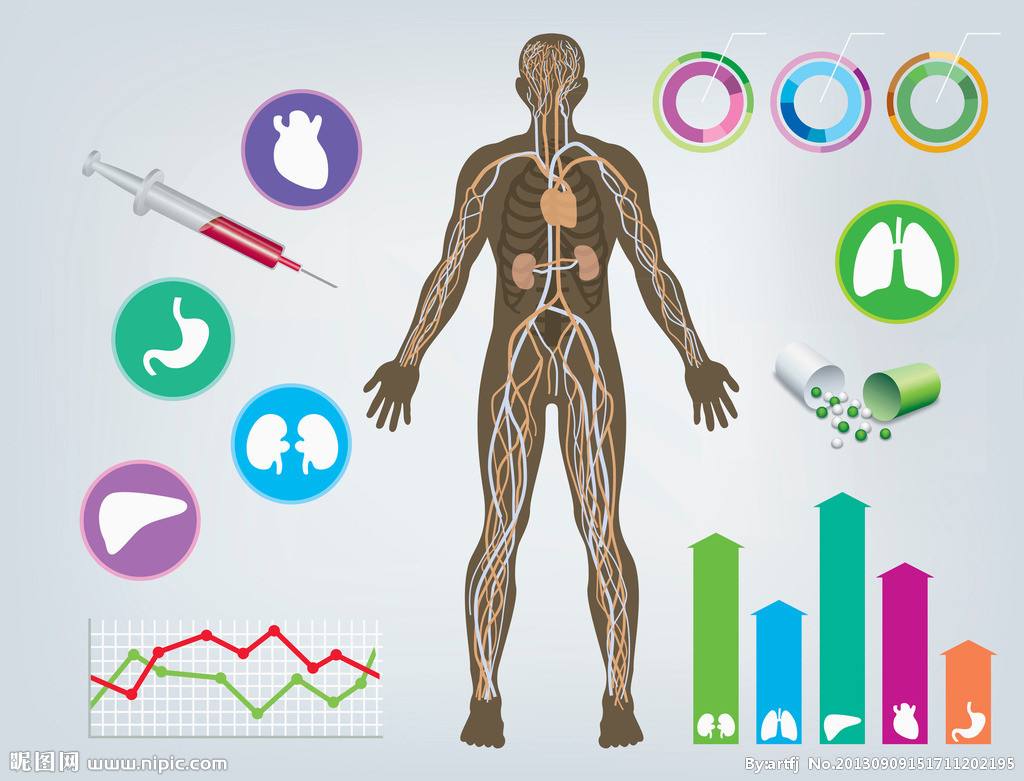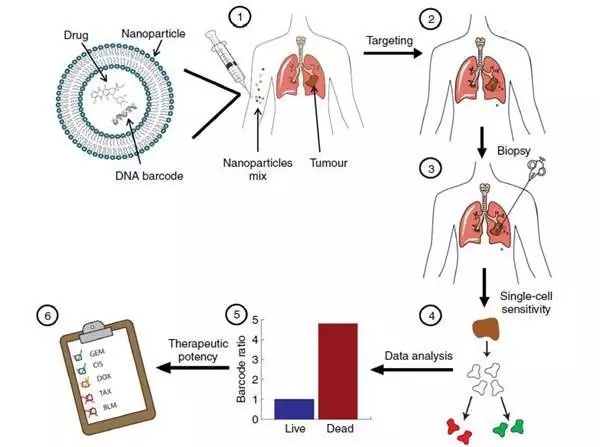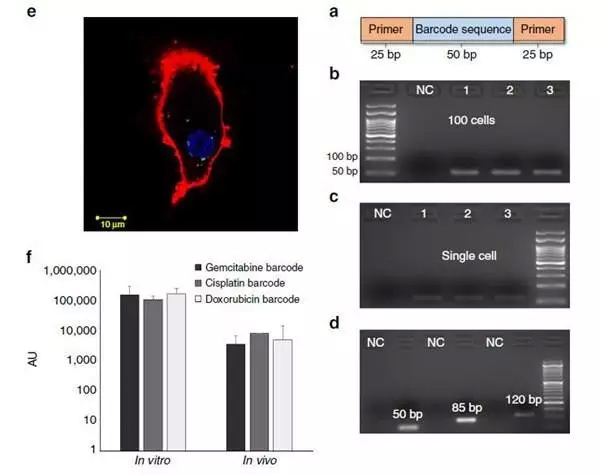Imagine a patient going to the hospital one day in the future. After the diagnosis, the doctor will give him/her a small dose of a mixture containing hundreds of nanomedicines in order to determine the nanomedicine suitable for him/her. The next day from the lesion The area is taken out of the tissue for testing, and then the most suitable nanomedicine is determined and treated... It sounds like a bit of a fantasy, but the researchers’ latest research is moving toward such personalized treatment goals, they use a The technology of DNA barcodes is used to screen nanomedicines in order to achieve personalized treatment. So what is a DNA barcode? In fact, a DNA barcode is a nucleotide sequence that can be decoded by PCR amplification and gene sequencing . By labeling nanomedicine with DNA barcodes, researchers can find the best therapeutics and determine the distribution of different nanoparticles. At the end of 2016, Professor Avi Schroeder from the Israel Institute of Technology published a research paper on personalized treatment of anti-tumor nanomedicines at Nature Communications. They used DNA barcode technology to bind liposomes containing different anticancer drugs. The anticancer efficacy of nanomedicine was predicted and verified. At present, the screening of anticancer drugs for clinical use is mainly carried out by in vitro culture or transplantation into immunodeficient mice, and then testing for drug sensitivity, but due to the complexity of the tumor environment, this method is time consuming and complicated to operate. The accuracy rate is not high. In order to solve these problems, Schroeder et al. proposed the use of DNA barcode technology to label, track and evaluate the effects of nano-anticancer drugs at the single cell level. figure 1. DNA barcode technology predicts the anti-cancer effect flow chart of different nano drugs. Image source: Nat. Commun. Because liposome nano drugs have been used clinically, they can be effectively enriched in tumor tissues to improve the anticancer effect of drugs. The researchers used liposomes to load different anticancer drugs and corresponding DNA barcodes (50-120 base pairs of DNA). Sequence), forming a variety of 100 nm nanoparticles. They selected three clinically used drugs for the treatment of triple-negative breast cancer (TNBC) (doxorubicin, cisplatin, gemcitabine) in mice, one drug corresponding to a barcode to form a nanoparticle. Through in vitro cell uptake experiments, they found that this DNA barcode can be detected and quantified at the single cell level (Figure 2). figure 2. DNA barcodes can be detected at the single cell level. Image source: Nat. Commun. Biotechnology,Tebuthiuron,Trifloxystrobin,Flufenacet,Amicarbazone,Prothioconazole,Sulfentrazone Changzhou Satidi Import and Export Co., Ltd. , https://www.czguanjiechuck.com

